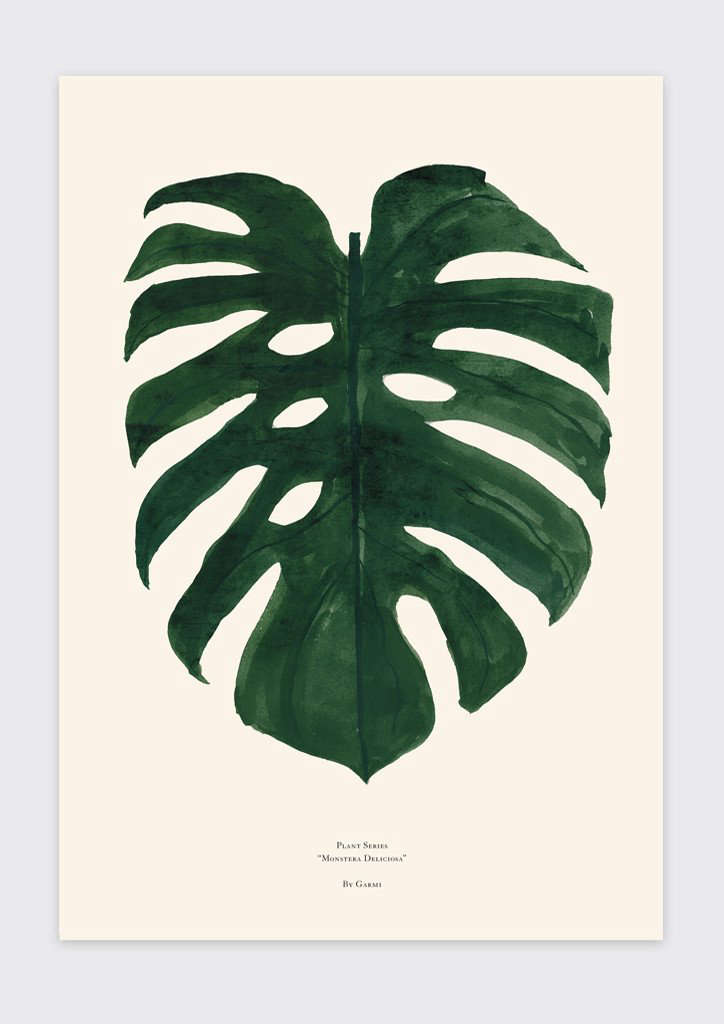Monstera, Monstera Deliciosa: “Swiss Cheese Plant”
We’ve noticed a trend: From Mother-in-Law’s Tongue to Spikenard to Monstera (aka “Swiss Cheese Plant”), houseplants don’t have the most appealing names. But that hasn’t stopped a surge of popularity for this tropical plant: Chances are you’ve spotted its graphic leaves on everything from throw pillows to wallpaper. Here’s a look at the care and keeping of this statement-making plant.

Monstera is a tropical plant from the Araceae family. Its name, as one might guess, comes from the Latin meaning “abnormal” because of its odd-looking, perforated leaves that are often punched through with holes.

In the wilds of the jungle, Monstera can grow to be enormous: dozens of feet tall with leaves that spread to nearly two feet wide.
The best-known variety is Monstera Deliciosa, or Mexican Breadfruit, in reference to its corncob-shaped fruit (which is said to taste like a combination of pineapple, banana, and mango). It’s not all delicious, however: The rest of the plant is poisonous and eating the fruit before it’s ripe can cause mouth irritation.
“It’s extremely common for monsteras to be confused with split-leaf philodendron, particularly in less mature plants,” writes Annie. ” Though the two are related (they’re part of the same plant family), an easy way to tell these plants apart is to look at the leaves: split-leaf philodendrons have perforated leaves but lack holes.”
Cheat Sheet

- Monstera needs lots of space: Put it in a statement-making spot in the living room, rather than in a tight corner or on a windowsill.
- Monstera can grow up trees and other plants in the rainforest, and would benefit from some support indoors, too. Consider adding a small trellis or pole nearby.
- If you can’t commit to a whole Monstera plant—or if yours is running rampant—trim a leaf or two and stand them upright in a clear glass vase.

Keep It Alive
- Find a balance between sun and shade. If Monstera is given too much sun, the leaves will yellow. If it’s left in the dark, the plant will exhibit something called negative phototropism, where new leaves grow towards the dark, rather than the light. (It’s a pretty clever trick: In the jungle, darkness signals the presence of a larger tree that Monstera can climb up to reach sunlight.) Since this isn’t possible in a living room, indirect sun is best.
- Water Monstera moderately and evenly, about once a week. Wait until the soil is fairly dry before watering again. Keep in a fairly humid environment.
- To curb excessive growth, avoid re-potting too often and prune regularly by pinching off new growth.
Scientists have speculated about the reason for the holes in Monstera leaves: One theory is that this perforation maximizes the leaf’s surface area, and therefore its ability to capturing sunlight on the rainforest floor; the other is that it allows tropical downpours to pass through the leaves, thereby limiting damage to the plant. This explains Monstera’s other name: Hurricane Plant.


- Jamie’s Jungle: At Home with Houseplants in London.
- Vines & Climbers 101: A Guide to Planting, Care & Design.
- Best Houseplants: 9 Indoor Plants for Low Light.
Finally, get more ideas on how to successfully plant, grow, and care for monstera with our Monstera: A Field Guide. And for more ideas on how to plant, grow, and care for various houseplants with our Houseplants: A Field Guide.
Interested in other tropical plants for your garden or indoor space? Get more ideas on how to plant, grow, and care for various tropical plants with our Tropical Plants: A Field Guide.


















Have a Question or Comment About This Post?
Join the conversation (1)